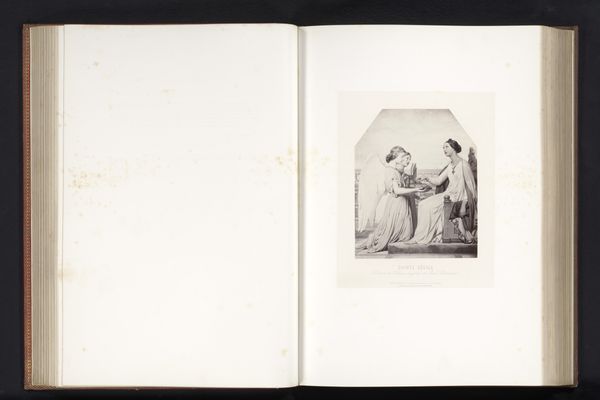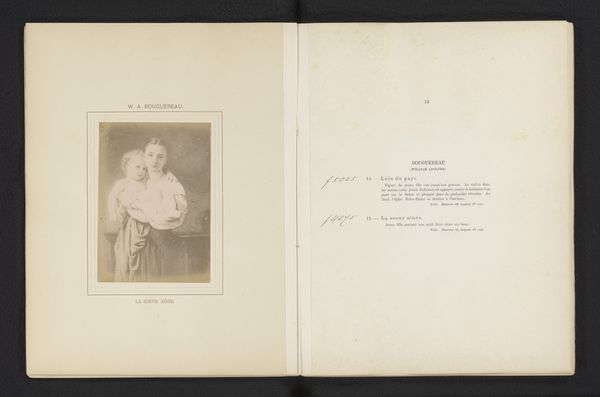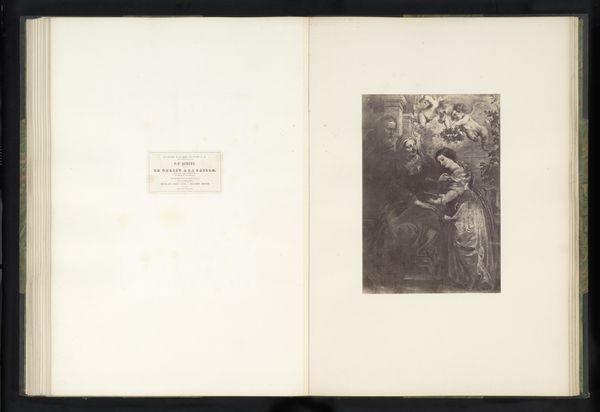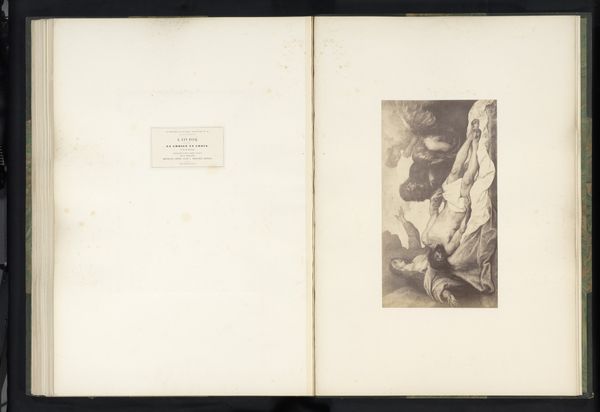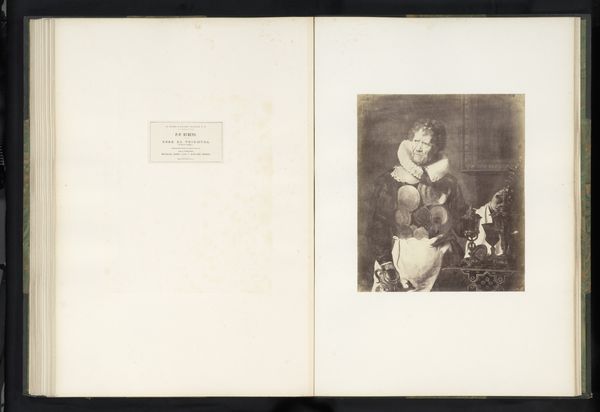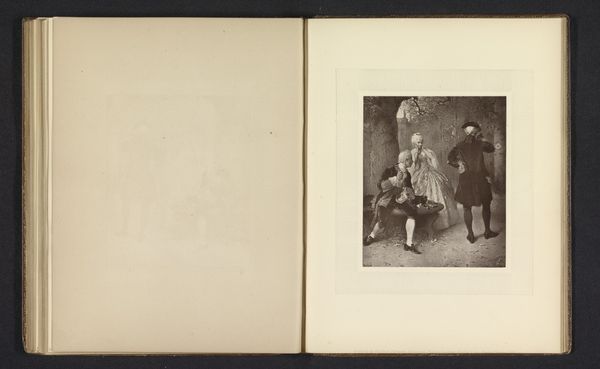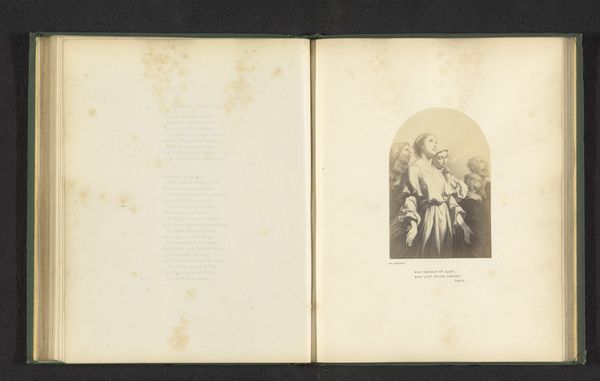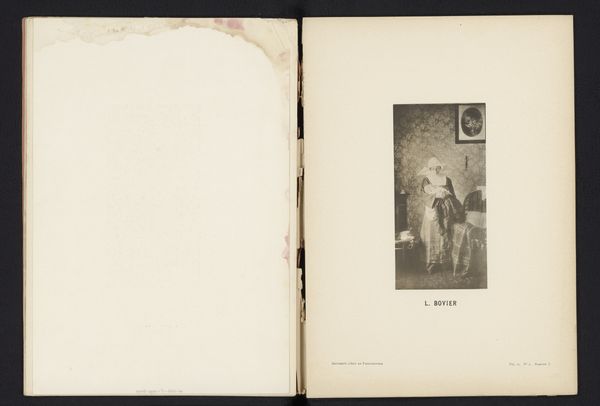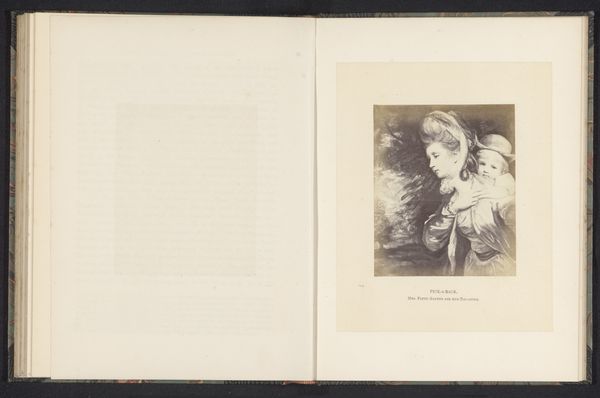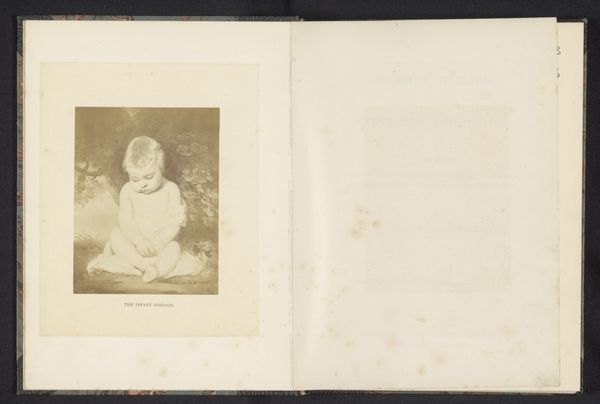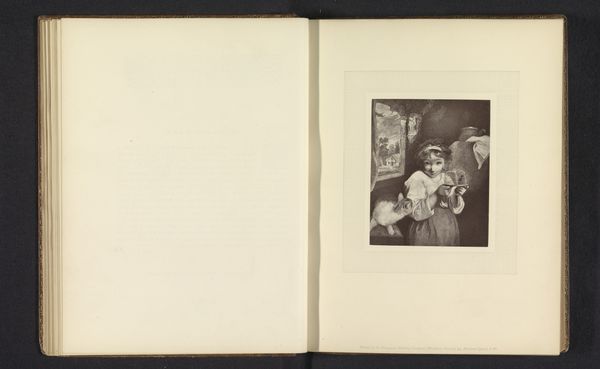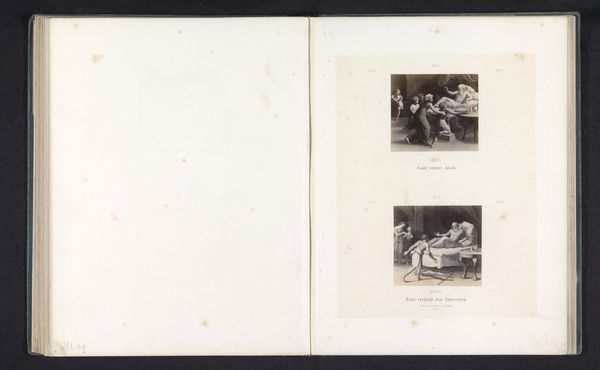
Fotoreproductie van Maria omringd door serafijnen en cherubijnen door Jean Fouquet before 1861
0:00
0:00
print, photography, albumen-print
#
portrait
# print
#
11_renaissance
#
photography
#
italian-renaissance
#
albumen-print
Dimensions: height 279 mm, width 249 mm
Copyright: Rijks Museum: Open Domain
Editor: This is an albumen print from before 1861, a photographic reproduction by Edmond Fierlants of Jean Fouquet’s "Maria surrounded by seraphim and cherubim.” It’s interesting how photography here attempts to capture and disseminate painting, turning religious iconography into something reproducible. How should we approach this remix of mediums and time periods? Curator: That’s a great point. Considering the socio-political climate of the mid-19th century is crucial. Photography, still relatively new, was democratizing art, challenging traditional power structures. This photograph makes the image far more accessible and yet also slightly strips away from the idea of a single artist creator by presenting this copy as something valuable in and of itself. Editor: So, you see it as an act of democratization and how does the photograph itself affect the reception of Fouquet's original work? Curator: Exactly. Think about who now has access to this image of the Virgin. What impact does mass reproducibility have on ideas of faith, womanhood, and artistic genius? The original painting was commissioned in a very specific historical and patriarchal context, right? Now photography takes a step to undermine these assumptions. What does it mean when photographic tools render a once unattainable piece accessible to the wider public? Editor: I never thought of it in terms of power structures being challenged. That's fascinating. So it shifts the discussion to one of cultural accessibility and challenges assumptions? Curator: Precisely. We have to consider the political implications inherent in its new medium and the accessibility that it granted new audiences, opening up new critical and social contexts. In doing so, we reconsider both Fouquet's painting and Fierlants’ photograph in light of photography's democratizing force. Editor: This gives me a fresh appreciation of the dialogue between the original work, its reproduction, and how the medium informs our understanding. Thanks for highlighting the social context here, really crucial point. Curator: Indeed, the convergence of historical and cultural criticism enables us to unpack the layered narrative and complexities embedded in such pieces of art, which may shed a lot of light on contemporary theoretical approaches and challenges to our modern culture.
Comments
No comments
Be the first to comment and join the conversation on the ultimate creative platform.
